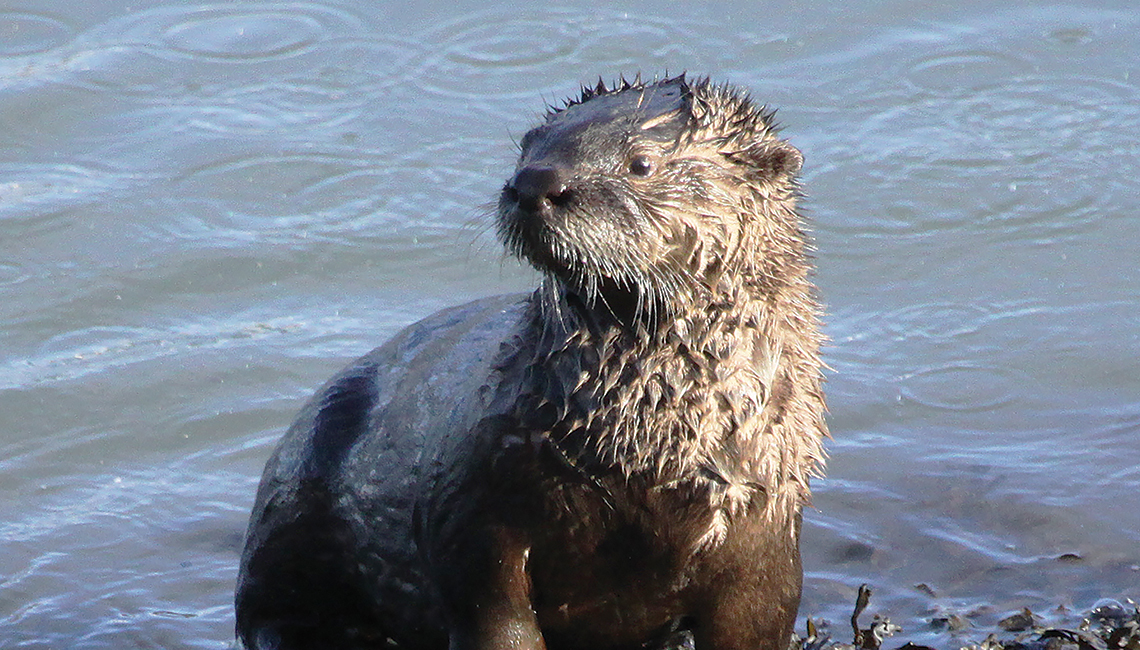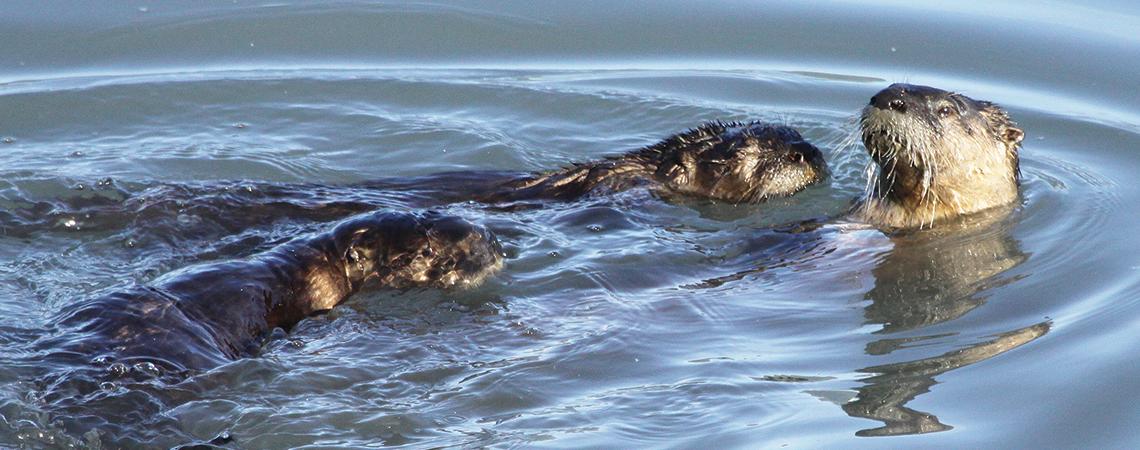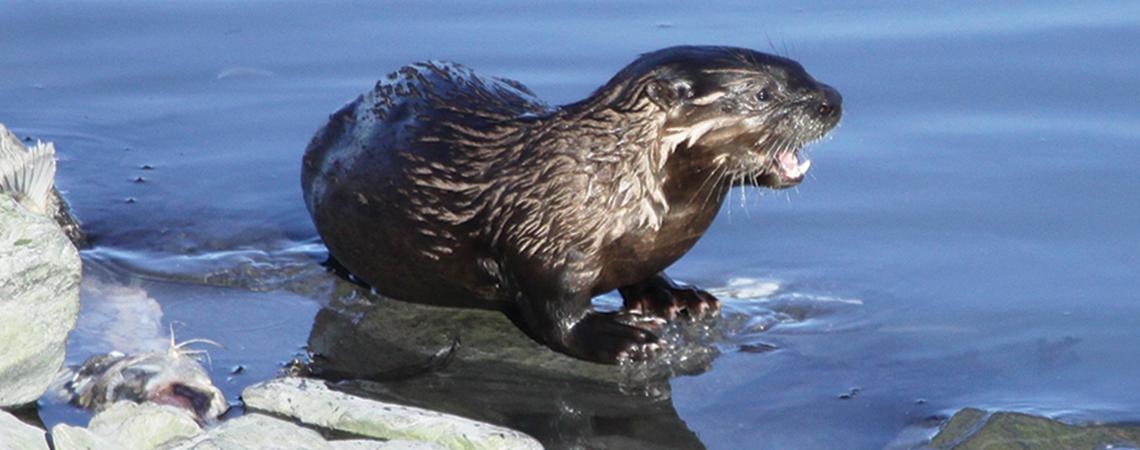No one wrings more fun out of life than a river otter. Unless, of course, it’s a family of river otters. Wildlife biologists are hesitant to call much of this animal’s behavior “play,” but how else would you describe sliding down a slick, muddy creek bank on your belly, time after time; then, once in the water, executing perfect rolls and spins just because you can?
River otters inhabit nearly all of the rivers, larger streams, swamps, and marshes in Ohio, but that has not always been the case. Historically native to the Buckeye State, otters were extirpated by the early 1900s, then reintroduced by the Ohio Division of Wildlife beginning in 1986.
To fuel a river otter’s constant energy, they may eat as much as 20% of their body weight daily in fish, aquatic insects, crayfish, snakes, and frogs.
Over a period of seven years, 123 otters were live-trapped in Louisiana and Arkansas, then released in the Grand River, Killbuck Creek, Little Muskingum River, and Stillwater Creek watersheds. From those four modest stockings, the population expanded rapidly, and today, river otters have been confirmed in 75 watersheds in 83 of Ohio’s 88 counties.
John Clem, at the time a natural resources pilot (now long retired), transported the river otters to Ohio by air. “I would bring back about 25 otters per trip,” says Clem, “with four or five otters housed per cage. I vividly remember once getting my thumb too close to one of the cage openings and being bitten. The otter got me pretty good, too — his sharp front teeth penetrated all the way to the bone.”
Clem also recalled the heavy, musky odor that filled the airplane when the otters became stressed. “We eventually learned to hang tarps inside the plane so that the otters could not see humans or see the light of the sun when it shined through the airplane’s windows. That seemed to calm them down. The project was a lot of work, but also a lot of fun and ultimately, very rewarding to have been part of.”
So, what does the future hold for Ohio’s river otters? Katie Dennison is the Division of Wildlife’s current furbearer biologist and offers this look into her crystal ball: “The story of river otters in Ohio — and across much of their North American range — is a true wildlife management success story. Prior to the reintroduction of river otters, efforts were initiated in Ohio and across the country to improve water quality and riparian habitats. The otter reintroduction in Ohio likely would not have been as successful without those efforts.
“The Division of Wildlife has carefully monitored the river otter population since reintroduction and will continue to do so,” she says. “In future years, we expect to see continued growth of the otter population in areas of western Ohio where they are newly established and further expansion into other areas of the state, offering new opportunities for people to observe them.”
The second half of the 20th century was a time of restoration for Ohio’s wildlife. In addition to river otters, other high-profile species — wild turkeys, peregrine falcons, ospreys, and trumpeter swans — were also reintroduced and are once again flourishing in the Buckeye State. Additional such work continues yet today with other critters that might not be as readily observable or well known, but are just as important in re-creating and maintaining a healthy wild Ohio.
Best river otter viewing areas in Ohio:
- Grand River Wildlife Area (Ashtabula County)
- Mosquito Creek Wildlife Area (Trumbull County)
- Killbuck Marsh Wildlife Area (Wayne and Holmes counties)
- Stillwater Creek (Harrison and Tuscarawas counties)
- Little Muskingum River (Monroe and Washington counties)











